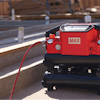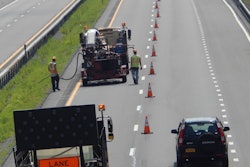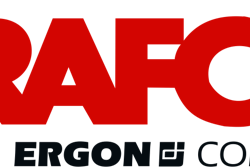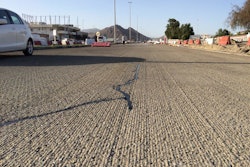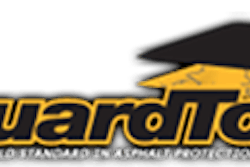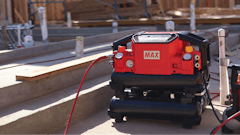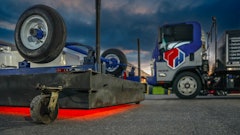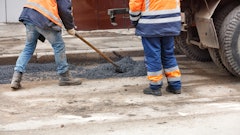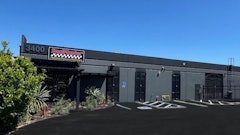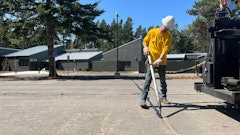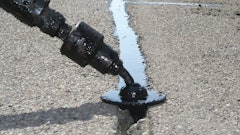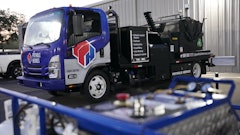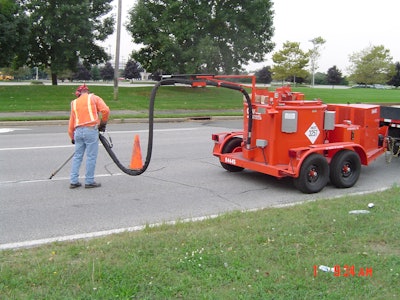
Pavement preservation is defined as “a program employing a network level, long-term strategy that enhances pavement performance by using an integrated, cost-effective set of practices that extend pavement life, improve safety and meet motorist expectations.” by the National Cooperative Highway Research Program (Decker, p2). Cracksealing is a pavement preservation method proven to extend pavement service life, increase pavement condition index, reduce cracking and potholes and improve pavement smoothness. Cracksealing is proven as the lowest cost treatment with the highest benefit to cost ratio that will extend the service life of pavement and immediately reduce maintenance costs resulting from less road repairs and patching. Crack treatments, as with most highway construction and maintenance processes, require proper safety procedures to produce a safe work environment. If you follow the safety procedures and recommendations, crack sealing is one of the safest construction and maintenance procedure utilized.
The major hazards that are present for cracksealing operations include 1) exposure to traffic, 2) exposure to elevated temperature materials, and 3) proximity to powered equipment. Identifying the hazards and taking proper measures to mitigate these risks include: traffic control, personal protective equipment (PPE), and proper equipment operation and training procedures.
Traffic Control – best practice to mitigate exposure to traffic
Appropriate traffic controls must be placed around the crack treatment construction area to protect workers and the public. Traffic control may be either a moving operation or a stationary work zone and is necessary to provide a safe working environment for crews and a minimally disruptive traveling path for traffic (Smith, p49). Workers must always remain within the traffic control area during crack sealing operations. Traffic controls should be designed in accordance with part 6, Temporary Controls, of the FHWA Manual on Uniform Traffic Control Devices or per project specifications.
On highways and streets, crack treatments are generally performed as a moving operation using a single lane at a time. Traffic controls are moved as the construction work zone proceeds along the pavement. The lane closure distance after sealant has been applied must be of sufficient time and distance for the product to cure and be ready to bear traffic. Often crack sealants are treated with DETACK or similar product that provides the ability for traffic to immediately travel over it. In parking lots sections of the pavement should be barricaded during crack sealing operations to exclude vehicles and pedestrians (stationary) until the sealant is cured and ready to bear traffic. In parking lots the hot-applied crack sealant must cool sufficiently so that pedestrians are not at risk of exposure.
Personal Protective Equipment (PPE) - best practice to mitigate exposure to elevated temperature materials
Proper clothing and personal protective equipment (PPE) must be worn at all times when operating crack sealing equipment (melters) due to high operating temperatures. When operating equipment, it is important that workers always wear the following:
- Long pants
- Long sleeved shirt buttoned at the wrist
- Heat resistant gloves
- Eye protection (safety glasses or face shield)
- Hard soled work shoes
- Traffic safety vests and hard hat (when exposed to vehicular traffic)
Proper Equipment Operation and Training Procedures – best practice to mitigate proximity to powered equipment
Proper operation of a melter is imperative to worker safety. Always read the manufacturer’s operation and safety manuals prior to working with crack sealing equipment. All workers should read the operation and safety manuals, be familiar with the equipment and understand all the equipment procedures, warnings, and safety guidelines.
Workers should be appropriately trained to properly and safely operate equipment they will be using. Training should also include recognizing and preventing potential safety hazards that may be present at the work site. The contractor should establish appropriate personnel training and operational procedures as required by OSHA and other applicable agencies for proper operation of the project. Ensure all personnel are familiar with the SDS (safety data sheets) for the products being applied.
Melters are engineered with consideration for the worker’s and operator’s safety. However, engineered safety designs can only do so much, and every member of the crack sealing crew is responsible for their own and other’s safety at all times.
Equipment Safety Best Practices
- It is important to never operate the equipment in a closed building or confined area.
- Avoid all bodily contact with hot sealant and heat transfer oil.
- The melter should never be left unattended when running.
- The burner should never be left unattended when lit.
- Keep the proper type of fire extinguisher near the unit at all times.
- It is important not to let water enter any part of the machine. Water will displace oil and sealant and this reaction could be hazardous when it reaches operating temperature.
- Once the equipment has been started keep hands, feet, and clothing away from all moving parts.
- Never exceed the manufacturer’s recommendations for maximum sealant temperature and maximum heat transfer oil temperature and do not overfill the oil.
- Always shut down the burner and engine before attempting to refill the fuel tank.
- Perform routine maintenance as recommended by the manufacturer. Below are some common routine safety procedures that help to maintain the melter and provide additional safety for workers. However, these are simple guidelines and the recommendations from the manufacturer should always be followed and adhered to:
- Each day before igniting the burner and starting the engine, check the engine oil level and all fluid levels at ambient temperature.
- Check and tighten any loose bolts and screws after every 100 hours of operation.
- Replace any hoses that show signs of wear, fraying or splitting.
- Check all fittings and joints for tightness and make sure that they are leak proof.
- Check all tire lug nuts as per the manual.



